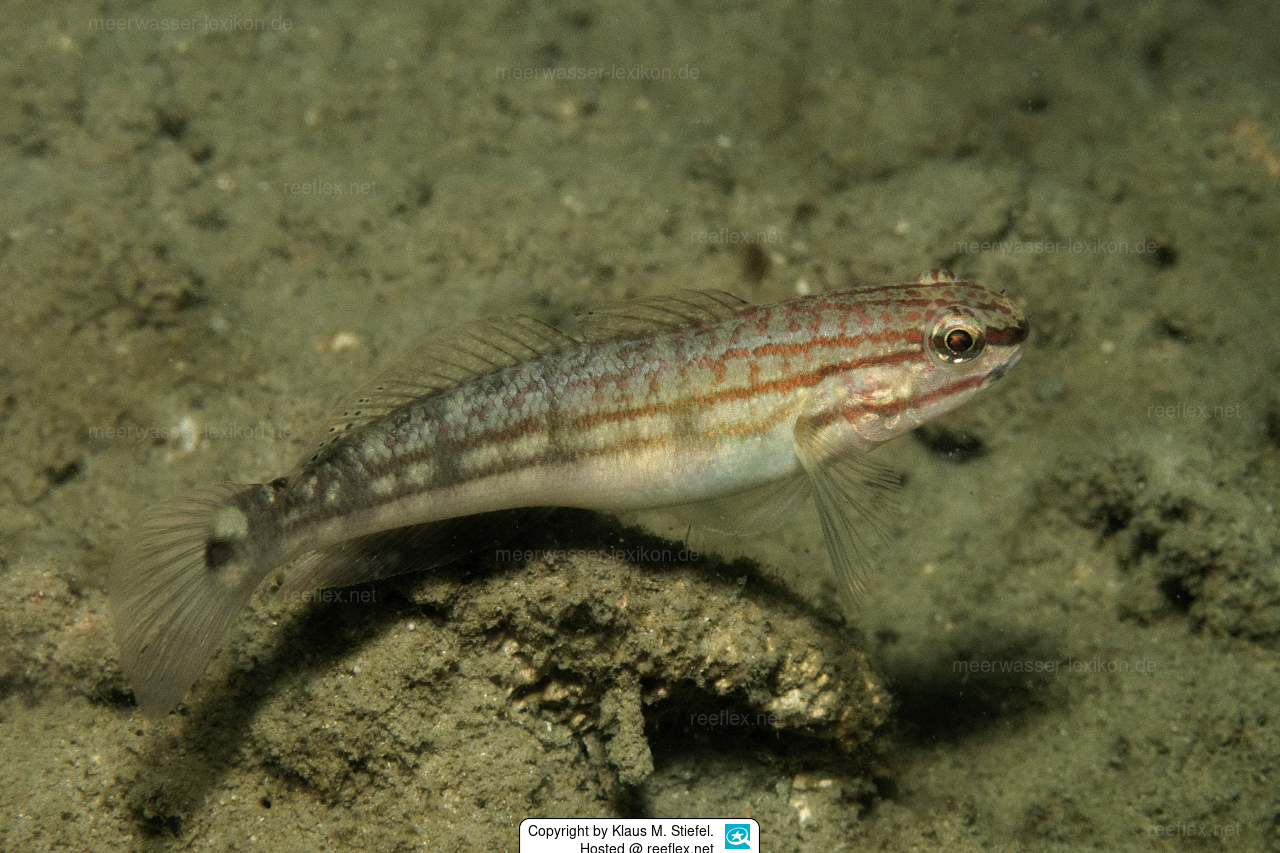Info
Herre, 1927
Amblygobius buanensis is found in sandy inner mudflats near mangroves, in seagrass meadows and in inner reefs, usually the goby grazes a little above the bottom.
The goby feeds on small invertebrates and organic matter such as detritus.
Water depth: up to 15 meters, but mostly around 4 meters.
Synonym:
Amblygobius perpusillus buanensis Herre, 1927
Classification: Biota > Animalia (Kingdom) > Chordata (Phylum) > Vertebrata (Subphylum) > Gnathostomata (Superclass) > Pisces (Superclass) > Actinopteri (Class) > Perciformes (Order) > Gobioidei (Suborder) > Gobiidae (Family) > Gobiinae (Subfamily) > Amblygobius (Genus) > Amblygobius buanensis (Species)
Jumping guard
A jumping guard prevents (nocturnal) fish from jumping out.
Wrasses, blennies, hawkfishs and gobies jump out of an unprotected tank in fright if their night rest is disturbed, unfortunately these jumpers are found dried up in the morning on carpets, glass edges or later behind the tank.
https://www.korallenriff.de/en/article/1925_5_Jump_Protection_Solutions_for_Fish_in_the_Aquarium__5_Net_Covers.html
A small night light also helps, as it provides the fish with a means of orientation in the dark!
Amblygobius buanensis is found in sandy inner mudflats near mangroves, in seagrass meadows and in inner reefs, usually the goby grazes a little above the bottom.
The goby feeds on small invertebrates and organic matter such as detritus.
Water depth: up to 15 meters, but mostly around 4 meters.
Synonym:
Amblygobius perpusillus buanensis Herre, 1927
Classification: Biota > Animalia (Kingdom) > Chordata (Phylum) > Vertebrata (Subphylum) > Gnathostomata (Superclass) > Pisces (Superclass) > Actinopteri (Class) > Perciformes (Order) > Gobioidei (Suborder) > Gobiidae (Family) > Gobiinae (Subfamily) > Amblygobius (Genus) > Amblygobius buanensis (Species)
Jumping guard
A jumping guard prevents (nocturnal) fish from jumping out.
Wrasses, blennies, hawkfishs and gobies jump out of an unprotected tank in fright if their night rest is disturbed, unfortunately these jumpers are found dried up in the morning on carpets, glass edges or later behind the tank.
https://www.korallenriff.de/en/article/1925_5_Jump_Protection_Solutions_for_Fish_in_the_Aquarium__5_Net_Covers.html
A small night light also helps, as it provides the fish with a means of orientation in the dark!







 Dr. Klaus M. Stiefel, Philippinen
Dr. Klaus M. Stiefel, Philippinen
















